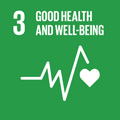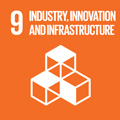- Docente: Maria Bignozzi
- Credits: 9
- SSD: ING-IND/22
- Language: English
- Moduli: Maria Bignozzi (Modulo 1) Laura Govoni (Modulo 2)
- Teaching Mode: In-person learning (entirely or partially) (Modulo 1); In-person learning (entirely or partially) (Modulo 2)
- Campus: Ravenna
- Corso: Second cycle degree programme (LM) in Offshore Engineering for Energy Transition (cod. 6056)
-
from Feb 17, 2025 to Jun 09, 2025
-
from Feb 19, 2025 to Jun 04, 2025
Learning outcomes
The aim of the course is to introduce the students to the use of metal alloys and concrete suitable for offshore installations and equipment. Knowledge on the corrosion mechanism and protection systems as well as concrete durability in harsh marine environment will be provided.
Course contents
A prior knowledge and understanding of metallic materials, their microstructure and mechanical properties is required to attend with profit this course. These knowledges are usually acquired following the course of Metallurgy and/or Materials Science.
Fluent spoken and written English is a necessary pre-requisite: all lectures and tutorials will be held in English.
Course Contents:
Module 1
Morphology of corrosive phenomena in marine environment, rate and penetration of corrosive attacks. Electrochemical corrosion mechanisms. Thermodynamics: Nerst equation, corrosion tendency and electrode potentials, Pourbaix diagrams. Kinetics: polarization and corrosion rate, causes of polarization. Passivation theory. Localized corrosion: selective corrosion, pitting, stainless steel sensitization, etc. Effect of stress and environment: stress corrosion cracking, corrosion fatigue, hydrogen embrittlement, etc.
Metal surfaces preparation and protection methods: metallic, inorganic and organic coatings. Anodic and cathodic protection. High-temperature resistant materials. Choice criteria for metals suitable for marine environment and off-shore structures.
Module 2
Offshore developments are mainly made of steel. The use of concrete remains limited to specific met-ocean and seabed conditions. During the course, the main types of offshore foundations are introduced. First the information is given within an historical perspective, subsequently, the ocean environments that led to the development of specific foundation typologies are introduced, with a focus to the Italian seas. The peculiarities of the foundation used for emerged structures are then discussed, as well as the main characteristics of deep-water subsea developments. A further aspect that is shown relates to the main differences between bottom fixed and floating structures as well as the requirements of offshore plants in intermediate water depths. Finally, the technological transfer from the oil and gas sector to the renewable market, with particular reference to the exploitation of offshore wind, is addressed. Industries will be invited to present case studies relevant to such technological transfer, within the context of the offshore energy transition.
Readings/Bibliography
The following book is indicated as reference. Other scientific books on Corrosion Science and Corrosion Engineering can be used as references.
H. Uhlig - Corrosion and Corrosion Control: an introduction to corrosion science and engineering - John Wiley & Sons, Inc. (1971).
Teaching methods
Frontal lessons and laboratory class.
As this course involves the attendance of laboratories, students shall follows Modules 1 e 2 in e-learning [https://www.unibo.it/it/servizi-e-opportunita/salute-e-assistenza/salute-e-sicurezza/sicurezza-e-salute-nei-luoghi-di-studio-e-tirocinio]. Moreover also Module 3 shall be attended (please visit the website of the study programme to find more information).
Assessment methods
Achievements will be assessed by the means of an oral examination. This is based on an analytical assessment of the "expected learning outcomes" and in particular the knowledge of the main mechanisms of corrosion and protection methods will be required.
The examination also takes into account Laboratory activity which is evaluated by means of a specific question in the oral examination.
The oral session, consists of a technical conversation with questions by the Professor and answers from the student.
High grades will be awarded to students who demonstrate an organic understanding of the subject and the outcomes above mentioned, a high ability for critical application, and a clear and concise presentation of the contents.
A failing grade will be awarded if the student shows knowledge gaps in key-concepts of the subject, inappropriate use of language, and/or logic failures in the analysis of the subject.
Teaching tools
Videos, power point slides and traditional blackboard.
Slides are available in the course repository on Virtuale platform.Office hours
See the website of Maria Bignozzi
See the website of Laura Govoni
SDGs


This teaching activity contributes to the achievement of the Sustainable Development Goals of the UN 2030 Agenda.
